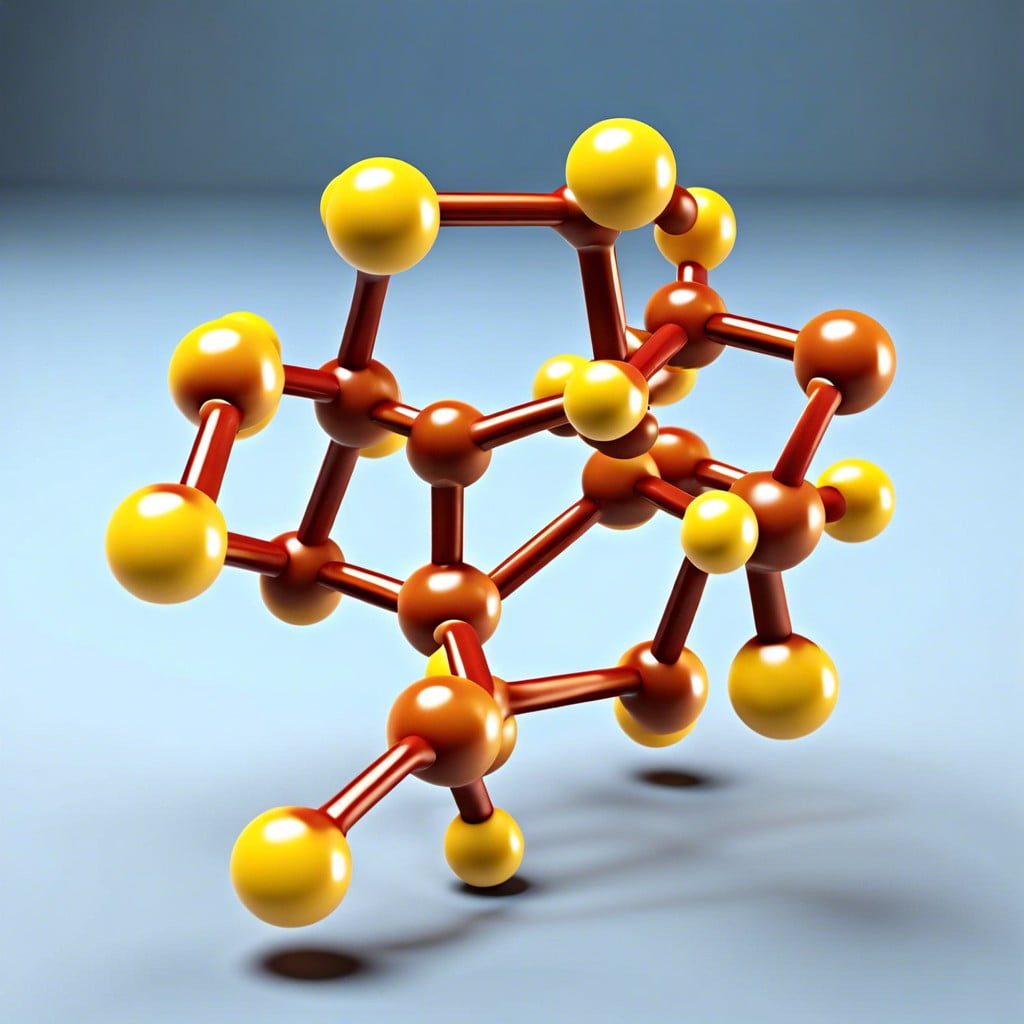Starch polymers are not just for dinner; they’re revolutionizing materials from packaging to fabrics, and here’s how they do it.
Key takeaways:
- Starch is a bio-based polymer made up of long glucose chains.
- Starch is used in packaging, building materials, and fashion.
- Starch-based materials are biodegradable and have a smaller carbon footprint.
- Starch shows promise in replacing traditional plastics in construction.
- Research is being done to strengthen starch-based materials for construction.
Understanding Starch As a Polymer

Starch is essentially a complex carbohydrate that plants make to store energy in a compact form. Think of it as nature’s way of packing a lunch. This bio-based polymer is made up of long glucose units linked together, creating chains called amylose and amylopectin. While amylose is a bit of a straight shooter—linear and orderly—amylopectin likes to branch out and show off with a more complex structure.
This gives starch its unique semi-crystalline nature, which not only helps plants stay energized but also gives us a biodegradable material to tinker with in various applications. Its ability to gel and thicken is like a party trick that comes in handy not just in cooking but also in products like biodegradable plastics and packaging materials. So, next time you’re munching on a potato, remember it’s not just tasty; it’s also a fine example of polymer science at work!
Chemical Structure of Starch
Starch, cozying up in your everyday corn and potatoes, is more than just a dinner staple. At its core, it’s a natural polymer, made up of numerous glucose units linked together. These units cozy up into two main molecules: amylose and amylopectin.
Amylose struts a simpler design, featuring long, unbranched chains that can coil into tight helices. This makes it somewhat shy and less soluble in water. On the flip side, amylopectin is the life of the party, boasting a highly branched structure, which makes it more water-soluble and gives starch its unique gelatinizing abilities when heated.
When these two mingle in starch, they create a robust structure that can be influenced by how they are heated and cooled, a humble reminder of their roles in both the kitchen and industrial applications.
Starch in Industrial Applications
Starch isn’t just for thickening sauces—this versatile polymer has carved out a niche in various industries, proving that it’s more than just food for your dinner plate. Thanks to its bio-based origin and biodegradability, starch is increasingly used in packaging materials. Imagine sipping your coffee from a starch-based cup that can naturally decompose, unlike its plastic counterpart.
In the realm of construction, starch is added to biodegradable building materials, enhancing sustainability. It serves as a binder in products like biodegradable pots for plants, which go from greenhouse to garden, breaking down to nourish the soil.
Even in the world of fashion, starch plays a pivotal role. It’s used in the production of bioplastics, which are a hit in the manufacture of eco-friendly fabrics resembling traditional polyester—only kinder to the planet.
So, while potatoes might be the first thing that comes to mind when you think of starch, this humble polymer is snapping up roles in industries far beyond the kitchen!
Environmental Impact of Starch-Based Materials
Starch-based materials are stepping up as eco-friendly heroes in the world of polymers. Unlike their petroleum-based counterparts, these bio-based materials biodegrade. This means that products made from starch polymers can break down into natural components over time, which significantly reduces their environmental footprint.
The production of starch-based materials often requires less energy compared to conventional plastics. This can lead to a smaller carbon footprint during manufacturing, aligning with global efforts to minimize greenhouse gas emissions.
Another applause-worthy feature is the renewability of starch as a resource. Derived from plants such as corn, potatoes, and wheat, it is abundantly available and constantly being replenished by Mother Nature herself. This makes starch a more sustainable choice over non-renewable resources that can deplete over time.
Moreover, using starch-based materials can help reduce plastic waste. As these materials break down in natural environments, they contribute far less to the global issue of persistent plastic pollution, letting wildlife breathe a little easier and giving our planet a much-needed breather too.
Future Trends in Starch Utilization in Construction
As the construction industry leans towards sustainability, the role of starch-based polymers looks quite promising. Expect to see starch transition from mere food to superstar building material! Here’s why:
Firstly, innovations in biotechnology are enhancing the physical properties of starch so it can better mimic conventional plastics. This means they could potentially replace some traditional petroleum-based materials used in insulation, panels, and coatings.
Secondly, the cost competitiveness of starch-based products is improving. With advancements in production efficiency and growing scale, these materials are becoming more economically feasible for larger construction projects.
Additionally, regulatory pushes for greener building materials are setting the stage for increased use of biodegradable and renewable resources. Starch-based polymers tick all these boxes, making them attractive in an industry under pressure to reduce its carbon footprint.
Lastly, research into composite materials that integrate starch with other natural fibers is gaining traction. This could further strengthen the material’s utility, making it suitable for a broader range of construction applications.
Hang on to your hard hats—the age of starch in construction might just be getting started!
Recap




